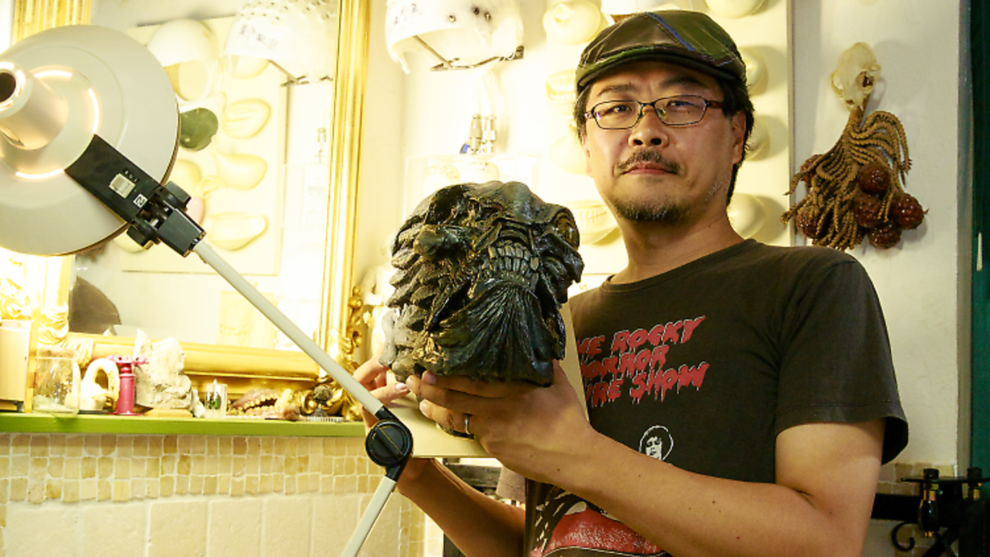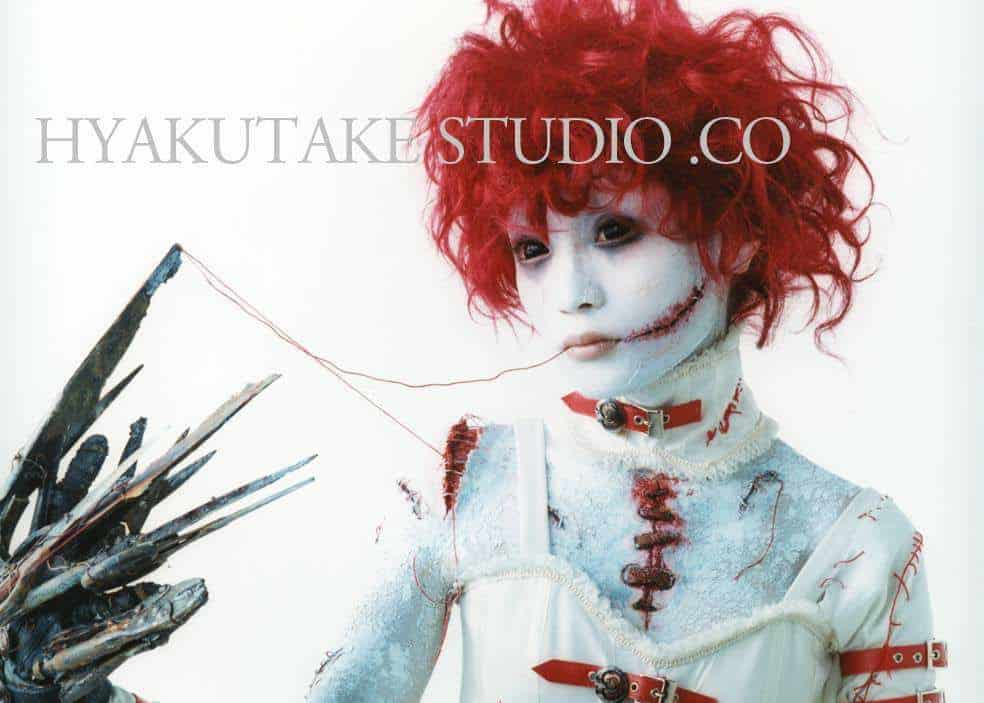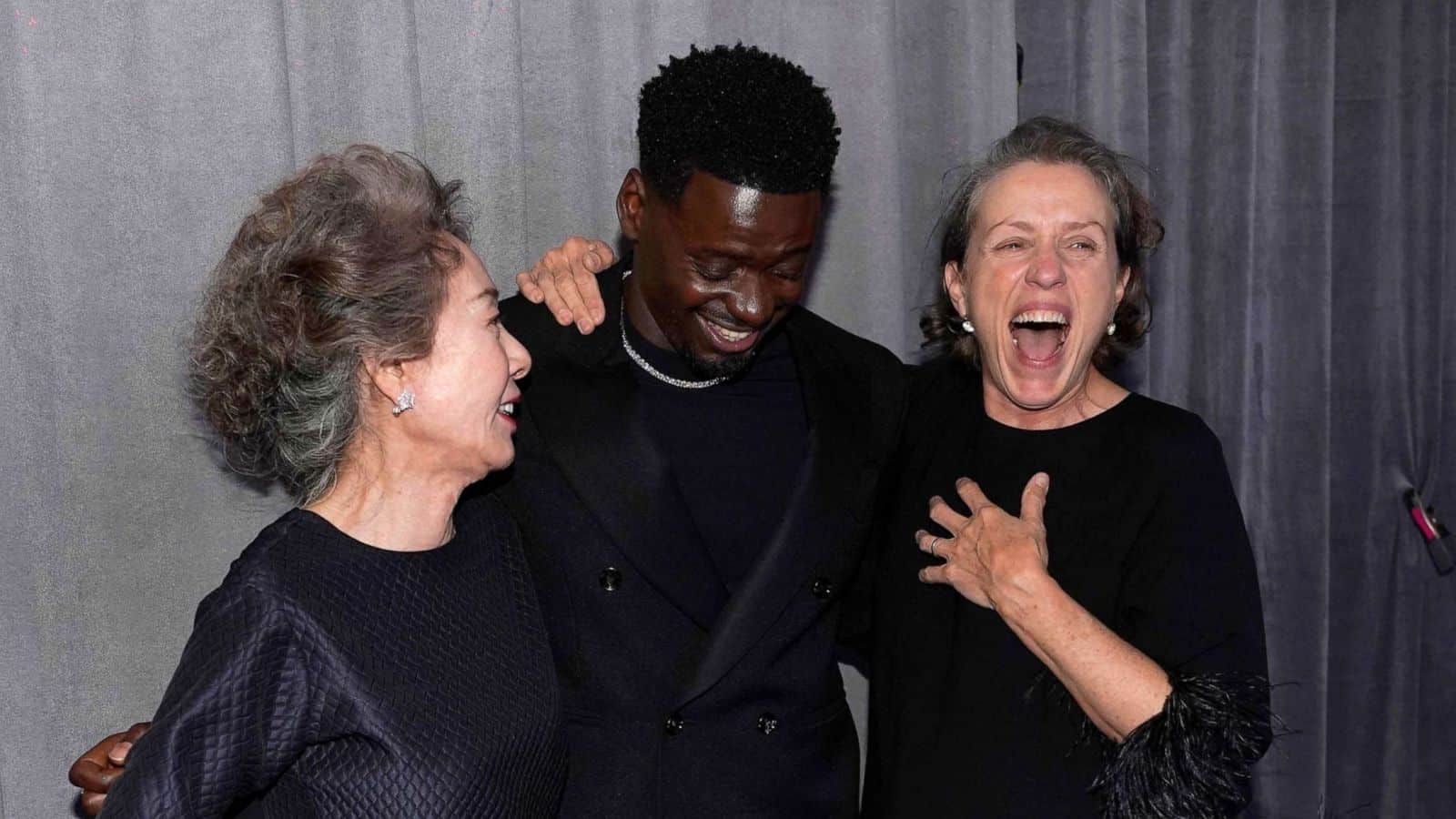Tomo Hyakutake is a master of the horrific. For more than two decades, he has been working as special makeup effects artist, moldmaker, model designer, model marker, mask creator, for movies, music videos and commercials, having dozens of credits to his names, while also retaining a gallery with his own work.
We speak with him about his art and his creative procedure, working in movies, his cooperation with the likes of Takashi Miike, Takashi Shimizu, Hideaki Anno and many more, the art and movie scene in Japan and many other topics.
How did your interest in art, and particularly the art of the horrific, begin?
When I was a student, Screaming Mad George and Kazu Hiro were my professors at the university. I also learned a lot from my respected seniors, Yasushi Nirasawa, Takayuki Takeya, and Steve Wang. After graduating from school, they introduced me to the industry. In terms of Art-horror, I was under the great influence of Screaming Mad George, who at that time was expressing surrealism in video art. His work such as “Poltergeist”, “A Nightmare on Elm Street” and “Marilyn Manson Antichrist Superstar” are truly the best!
Is the kind of art you create popular in Japan?
Some people in Japan say they like my works, but I don't really know if it's popular or not. How about overseas?
How did you end up working in movies, and can you explain a bit about what your work in the make-up department and SFX usually entails?
When I was a student, I started my career in the film industry as a prosthetic make-up assistant. I continued doing that in music videos and television for about 10 years, and then at the age of 30, I switched to film again and started making special make-up, set, and character designs on my own.
Can you give us some details about the procedure you follow to come up with your work? Where do you draw inspiration from?
To design a new image, I usually read books or go on some trip, visit a temple. I also get inspired by watching videos, and then I shuffle them with my images. What I'm trying to achieve in my design is to imagine what the future might look like.
Recently, it seems a large part of your work revolves around eggs. Why is that? Can you give some more details about how you came with this one?

My challenge for 2021 is to go beyond human imagination. In this case, I tried to grasp the difference between the outside and the inside of the egg.
You have cooperated with Takashi Miike, Hitoshi Matsumoto, Macoto Tezuka and Koji Shiraishi, among others. How was your experience working with them?
I worked with Takashi Miike on character design in “The Great Yokai Wai”. He is a real gentleman. He is very passionate about films and helps young artists in finding their way in the industry. With Hitoshi Matsumoto, I worked on “Big Man Japan”, where I did character design and special modeling. It was very peculiar because even though the set was quite tense, we wouldn't stop laughing (I guess this is because Matsumoto is a well-known comedian himself). I also worked on “Barbara” (directed by Macoto Tezuka), where I did the special make-up and modeling. Tezuka is a visual artist that I liked a lot since I was a kid. I had also the chance to collaborate with Koji Shiraishi on his “Sadako vs. Kayako”. I was in charge of character design and modeling. And since Shiraishi is a filmmaker who meshes modeling with CGI, working on the design with him was a lot of fun. With Takashi Shimizu, I worked a lot on different titles, including his latest piece, “Homunculus”, where I also dealt with special design. It will be distributed worldwide on Netflix, so if you have the chance, please have a look.

Are there any films among the ones you worked that stand out for you?
I have participated in more than 100 Japanese movies. All of them are special to me, but particularly Katsuhito Ishii ‘s “Smuggler, Eisuke Naito's “Litchi Hikari Club”, Michel Gondry's “TOKYO”, Kenji Tanizaki's “Enter the Fat Dragon”, Yoshiyuki Kishi's “WIldrness, Part 1”, Michito Fujii's“ Yakuza and the Family”, Hideaki Anno's“ Shin Godzilla”, and Takashi Shimizu's works are the most memorable.
In 2017 you also sat in the director's seat, with “Tetsudon: The Kaiju Dream Match”. How was the experience, and do you think you will direct more in the future?
Thank you for the research! This project was very exciting for me because I was able to create something more extraordinary, a vision of a more total world. If I have the chance in the future, I'd love to work on something like that again.
Can you give some more info about your atelier? Can someone buy your work?
I'm being invited to many art exhibitions in 2021. This year, as I mentioned earlier, I'm focusing on the theme of the egg. For all the purchasing inquiries, you can visit my Facebook page.
What is your opinion of the Japanese movie industry and art scene in general, at the moment?
I think that Japanese films are now in a point of liveliness due to the increase of the productions that find their way internationally on VOD platforms such as Netflix or Amazon Prime. Regarding art, I think that due to the general growth of social media, the audience can find out about the artist's work without going to an exhibition. The number of places where one can present their work has also increased significantly. And if the work is good, I think that thanks to social media, one can become a major figure in the scene much easier.
Are you working on anything new?
I am making some interesting visuals for movies and video works that will be released from 2021 to 2022. Please look forward to them
















